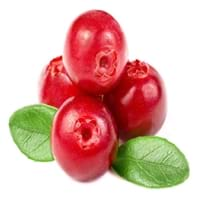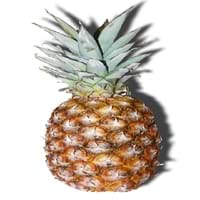Health Benefits
Cancer prevention, Heart care, Kidney stone treatment, Scurvy treatment, Ulcer prevention
Asthma treatment, Bronchitis treatment, Cancer prevention, Heart care, Increases metabolic rate
General Benefits
Anti-inflammatory properties, Boosts immune system, Digestive aid, Fights against infections, Strengthens bones
Anti-inflammatory properties, Controls blood pressure, Digestive aid, Eye care, Healing of wounds, Maintains healthy cholesterol level, Strengthens bones, Treatment of sinusitis, Treatment of common cold
Skin Benefits
Anti-aging benefits, Reduces wrinkles, Skin rejuvenation, Treatment of acne
Anti-aging benefits, Brightens and lightens complexion, Skin cleansing, Treatment of acne, Treatment of dark spots
Hair Benefits
Promotes longer and healthier hair, Protects hair, Treatment of dandruff
Prevents hair loss
Allergy Symptoms
Anaphylaxis, Breathing difficulty, Itching, Skin rash, Swelling of mouth, tongue or lips
Abdominal pains, Itching in tongue and other parts of mouth, Sneezing, Swelling, Tingling sensation in wrist and face, Vomiting, Wheezing
Side Effects
Allergic reaction, Diarrhoea, Nausea, Stomach pain, Vomiting
Causes swollen mouth, Allergic reaction, Diarrhoea, Nausea, Skin rash, Vomiting
Best Time to Eat
Any time except an hour after meal, Don't consume at night and before bed
Best if taken as a breakfast (or empty stomach), As a snack in the late afternoon, Eat the fresh ones, avoid mixing with any other foods, don't eat after meal., Morning time (before lunch)
Vitamin B5 (Pantothenic Acid)
Vitamin C (Ascorbic Acid)
Vitamin K (Phyllochinone)
Phytosterol
Not Available
Calories in Fresh Fruit with Peel
Not Available
Calories in Fresh Fruit without Peel
Not Available
Type
Berry
Berry, Tropical
Varieties
Early Black, Howes, Ben Lear and Stevens
Smooth Cayenne, Abacaxi, Red Spanish and Queen
Inside Color
White
Yellow
Taste
Bitter, Tart
Strong, Sweet, Tart
Origin
North America
Central America, South America
Grows on
Trees
Not Available
Soil Type
Clay, Sandy, Well-drained
Clay, Sandy loam, Well-drained
Climatic Conditions
Warm
Hot, Sunny
Facts about
- Europeans thought the cranberry blossom looked like the head of a sandhill crane, hence the name Cranberry.
- They are also known as bounce berries as they bounce when they ripe.
- Cranberries do not grow in water.
- A single pineapple takes 3 years to reach maturation.
- Pineapple is not an apple, but is actually a berry.
- The name is with reference to its resemblance to pine cones.
- Pineapple is sweeter if scales are more.
Top Producer
United States of America
Costa Rica
Other Countries
Azerbaijan, Belarus, Bulgaria, Canada, Latvia, Macedonia, NA, Romania, Tunisia, Ukraine
Brazil, India, Philippines, Thailand
Top Importer
Europe
United States of America
Top Exporter
United States of America
Costa Rica
Botanical Name
Vaccinium Macrocarpon
Ananas comosus
Synonym
Oxycoccus macrocarpus
Ananas sativus
Subkingdom
Tracheobionta
Tracheobionta
Division
Magnoliophyta
Magnoliophyta
Class
Magnoliopsida
Liliopsida
Subclass
Dillenhidae
Commelinidae
Family
Ericaceae
Bromeliaceae
Species
Vaccinium macrocarpon
A. comosus
Generic Group
Heath
Pineapple
Difference Between Cranberry and Pineapple
We might think that Cranberry and Pineapple are similar with respect to nutritional value and health benefits. But the nutrient content of both fruits is different. Cranberry and Pineapple Facts such as their taste, shape, color, and size are also distinct. The difference between Cranberry and Pineapple is explained here.
The amount of calories in 100 gm of fresh Cranberry and Pineapple with peel is 46.00 kcal and Not Available and the amount of calories without peel is Not Available and 50.00 kcal respectively. Thus, Cranberry and Pineapple belong to Low Calorie Fruits and Low Calorie Fruits category.These fruits might or might not differ with respect to their scientific classification. The order of Cranberry and Pineapple is Ericales and Poales respectively. Cranberry belongs to Ericaceae family and Pineapple belongs to Bromeliaceae family. Cranberry belongs to Vaccinium genus of Vaccinium macrocarpon species and Pineapple belongs to Ananas genus of A. comosus species. Beings plants, both fruits belong to Plantae Kingdom.









